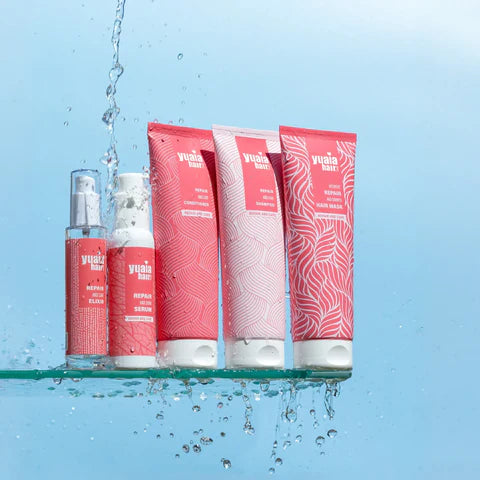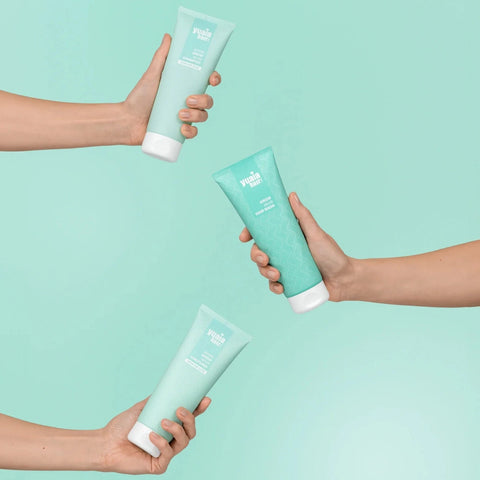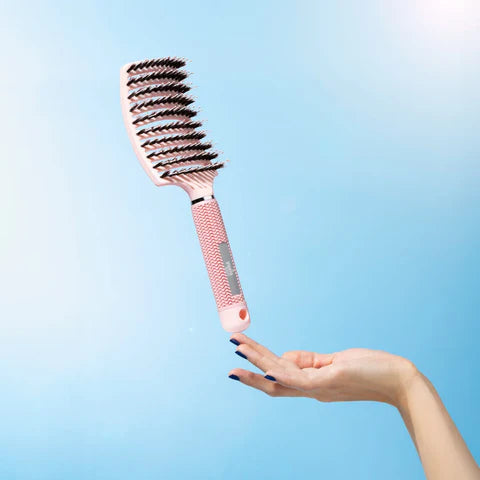
Causes of rough hair texture
Rough hair, often referred to as coarse hair, is primarily determined by genetics. Individuals with this hair type typically have thicker hair with a larger diameter than those with fine or medium types. This natural thickness can result in a rougher texture, which may feel less smooth to the touch.
Beyond genetics, environmental factors can play a significant role in enhancing the roughness of hair. Frequent exposure to heat styling, such as blow drying or using flat irons, can strip hair of its natural moisture, making it feel dry and coarse. Similarly, chemical treatments like coloring or perming can weaken the hair's structure, leading to increased roughness.
Harsh climates, particularly those with extreme temperatures or low humidity, can also contribute to the rough texture of hair. These conditions can deplete the hair's moisture content, making it prone to dryness and frizz. Additionally, certain health conditions and medications can exacerbate the roughness by affecting the hair's natural balance and growth cycle.
Effective care and management for rough hair
Managing rough hair begins with a consistent and tailored hair care routine. The key is to focus on hydration and moisture retention. Using moisturizing shampoos and conditioners can help replenish lost moisture and smooth the hair's surface. Our rosemary hair oil is an excellent choice for adding extra nourishment and shine, helping to tame frizz and enhance manageability.
To protect rough hair from further damage, it's advisable to avoid harsh chemical treatments and limit the use of heat styling. When styling is necessary, always apply a heat protectant spray to shield the hair from high temperatures. This not only prevents additional dryness but also helps maintain the hair's natural moisture levels.
Incorporating a weekly deep conditioning treatment or hair mask can also be beneficial. These products provide an intensive moisture boost, helping to smooth the hair cuticle and reduce the rough feel. Regular trims are recommended to remove split ends and maintain the overall health and appearance of the hair.
The role of hair texture education
Understanding the difference between hair texture and hair density is essential for choosing the right hair care products and techniques. Texture refers to the thickness of the hair, while density is the number of hair follicles on the scalp. Coarse hair, or rough hair, is characterized by its thicker texture, not by the number of hairs.
To identify coarse hair, try comparing a single hair to a piece of sewing thread. If the hair is similar in thickness or thicker, it is likely coarse. This knowledge can guide you in selecting products specifically formulated for coarse hair, ensuring better care and styling results.
By recognizing the unique needs of rough hair and adopting a tailored care routine, you can manage its challenges effectively. With the right approach, rough hair can be transformed into a healthy, manageable, and beautiful aspect of your overall look.
Clarifying common misconceptions
It's a common belief that coarse or rough hair is inherently unmanageable or unhealthy. However, this is not necessarily true. With the right care and attention, rough hair can be both sleek and healthy. The key is understanding that rough hair's texture is natural and can be enhanced with proper products and techniques. Many assume that rough hair is always dry and frizzy, but this can be mitigated by using moisturizing products and avoiding excessive heat or harsh chemicals.
Inclusive hair care solutions
Rough hair can be found across various hair types, including straight, wavy, curly, and coiled. Each type requires a unique approach to care and styling. For instance, curly hair often benefits from products that enhance curl definition while providing moisture, such as our Twirl and Curl curly cream. Meanwhile, those with straight or wavy hair might focus on smoothing products to reduce frizz and enhance shine.
At Yuaia Haircare, we offer sulfate- and silicone-free products that help restore moisture and manageability to rough hair. Our rosemary hair oil is particularly effective in providing the nourishment needed to maintain healthy, manageable hair.
Frequently asked questions
How can I tell if I have coarse hair?
To determine if you have coarse hair, compare a single strand of your hair to a piece of sewing thread. If your hair is similar in thickness or thicker, it is likely coarse. This simple test can help you understand your hair type and guide you in selecting the right products.
What products are best for managing rough hair?
Managing rough hair effectively involves using products that provide moisture and nourishment. Look for moisturizing shampoos and conditioners, like our Grow and Glow or Repair and Care lines, to help maintain hydration and smoothness. Additionally, using a heat protectant before styling can prevent further damage.
Can rough hair become smooth and manageable?
Yes, rough hair can become smooth and manageable with consistent care and the right products. By maintaining a regular hair care routine that focuses on moisture and protection, you can enhance the texture and overall health of your hair.
 Livraison en 2-4 jours
Livraison en 2-4 jours
 25 000+ clients satisfaits
25 000+ clients satisfaits
 Garantie de satisfaction
Garantie de satisfaction












